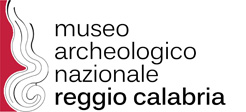Stars and Planets, from Antiquity to the Renaissance
The penultimate appointment, on Thursday, September 5th, at 9.00 pm, for the program of Summer Nights at the MArRC, with the evening openings on Thursday and Saturday from 8.00 pm to 11.00 pm, with a special entrance ticket for only 3 euros and a rich calendar of events on the magnificent terrace in the magical setting of a unique landscape on the sea of the Strait and under the starry Sky. The philologist Paola Radici Colace, lecturer at the University of Messina, honorary president and scientific director of the International Center of Writers of Calabria, will speak on the theme: “Stars and planets in churches, palaces and in the collective imagination of the Renaissance”.
Introducing: the director of the Museo Carmelo Malacrino and the president of CIS Calabria Loreley Rosita Borruto.
If in modern times man’s desire controlling the future is expressed through disciplines such as meteorology, climatology, sociology, political economy, in antiquity this task was entrusted to astrology.
“Starting from the III century B.C., in the fertile context of Hellenistic syncretism, the astrologers had been taken over the astrological prediction from the Babylonians and the Egyptian priests, transferring it first to the Greek world and afterwards to the Roman world. To these “practicing” astrologers, who were often also writers and manualists, the ancient man entrusted the task of satisfying his knowing the future”, Radici Colace says.
“This cultural context – she continues – is the basis of the ‘monumentalization’ of astrology by decorative elements with an astrological theme and linked to the cycle of months and the seasonal calendar of human activities, to description of the celestial map, to the representation of the zodiac signs, in churches and palaces, that had been declined in different ways according to the epochs. The representation of the Zodiac has been a central theme throughout the Renaissance”.
For example, in the Portal of the Zodiac in the “Sacra di San Michele” (XII century AD), the human microcosm is related to the macrocosm of the universe, in about twenty sculptural and pictorial cycles that present a conception of the well-ordered cosmos, in which the same clock beats in unison, in the large as in the small, for a renewed confidence in the stars.

